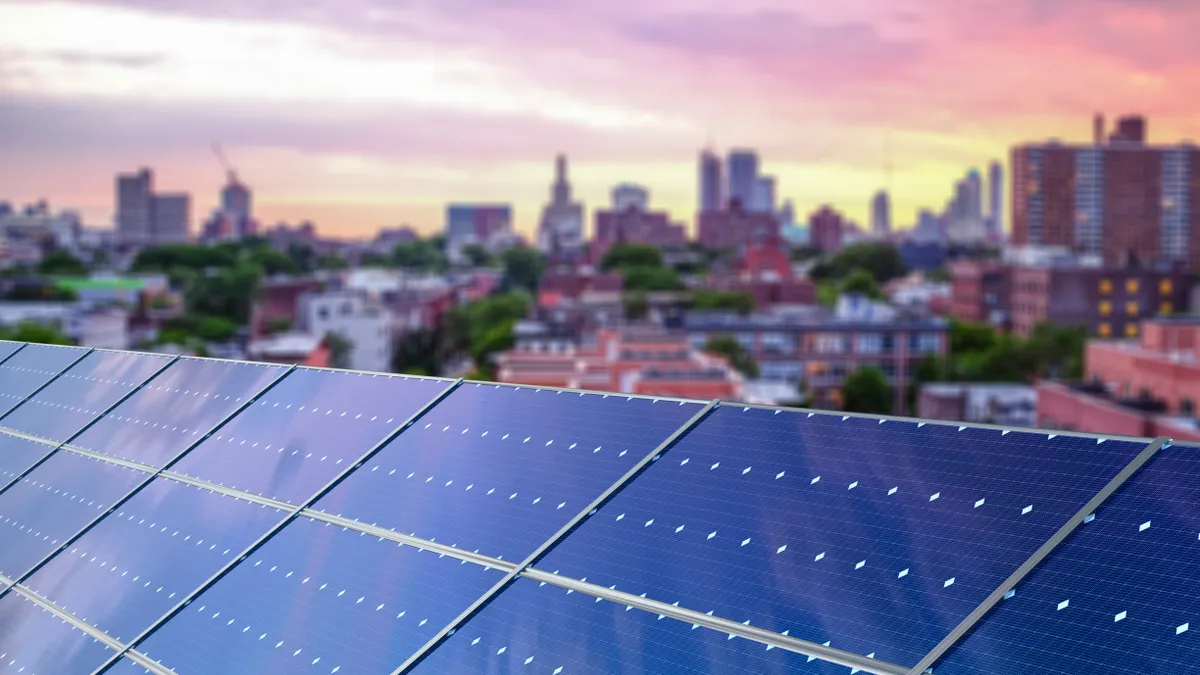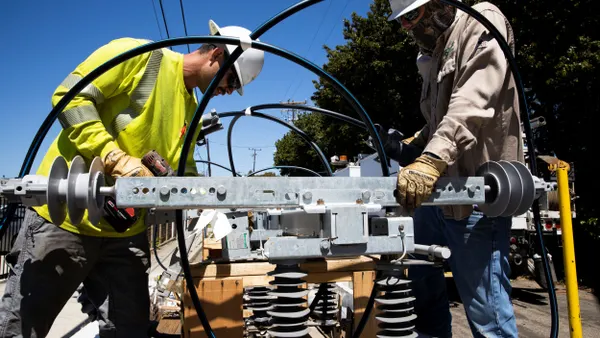Arnold R. Wallenstein is a Boston-based attorney who represents independent power producers in New York and other states and is the principal member of the EnergyLawGroup.org.
The New York Climate Action Council, the state entity tasked with devising a plan to implement the 2019 Climate Leadership and Community Protection Act to combat climate change, issued its Scoping Plan in December 2022. The plan calls for hundreds of billions of dollars in state and ratepayer subsidies for renewable energy, battery storage and transmission lines, but it is clear that it is doomed to fail to achieve its goals of 100% zero emissions electricity production by 2040 while simultaneously supplying a reliable supply of electricity.
The Climate Action Council projects current electric load in New York to triple by 2040 due to the electrification of transportation and 100% building electrification. By 2040, when all electricity generation must be zero emissions, NYISO, the independent New York grid operator, states that at least 95 GW of new generation must be developed to make up for generation plant retirements and increased electrical demand. This goal is unrealistic and unachievable because the state only added 12.9 GW over the last 23 years, and it is highly unlikely that 95 GW of new generation capacity will be added in 17 years due to state permitting and grid interconnection delays.
The Climate Action Council's final Scoping Plan also reveals that New York will need 15 GW to 45 GW of new “zero emission dispatchable electric generation” by 2040 to meet increased electric demand and maintain electric system reliability. This is emission-free electric generation that can be dispatched, i.e., turned on, by NYISO at night or stormy conditions when there is no solar radiation or during calm wind conditions. But the Scoping Plan also admits that this 15 GW - 45 GW target “cannot be currently met” with existing technologies.
This dire prediction is confirmed by NYISO, which has issued reports stating that the New York grid may experience as much as a 10% deficiency, and possibly more, in generation capacity by 2040, and will require 32 GW of new zero-emission dispatchable generation by 2040 — which would almost double the current New York grid’s 37 GW generation capacity. NYISO also warns that such zero-emission dispatchable generation technologies “are not commercially available.” Electricity shortages will occur if these new emission-free generation plants do not materialize in time as hoped for by the state. Hope is not an action plan to solve electric reliability deficits.
Electric power deficiency is already starting to occur. A report just issued on April 14 by NYISO points out that New York City and the Lower Hudson Valley may have electric reliability problems and generation shortages starting in 2025 due to generation plant retirements caused by the New York Department of Environmental Conservation shutdown of NOx producing peaker plants and if there are extreme weather events, worsening through 2032, where there may a 600 MW generation deficiency in New York City and environs.
The Climate Action Council’s climate plan — if fully implemented by the state as is currently being debated in the legislature — risks placing New York in an electricity shortage that could result in blackouts and brownouts. The New York grid operator pointed out that if existing gas-fired electric generation is shut before new resources come on line, there is a risk that NYISO will not be able to provide a reliable electric system.
NYISO also said fossil fuel generators — natural gas and oil-fired — will be needed to maintain reliability until non-emitting dispatchable resources can effectively replace the fossil-fired generation plants to provide grid reliability as a back up to intermittent, weather-dependent renewable energy resources. NYISO also predicts than in 2040 when fossil-fueled generators are shut down by state's climate law, zero-emissions dispatchable generation, which doesn't yet exist, will still be required to supply 10% or more of New York’s electricity, depending on how many megawatts of new renewable and “dispatchable” emission-free generation is actually operational by 2040.
These warnings of future electric deficiencies are echoed by the New York State Electric Reliability Council and the North American Electric Reliability Corp., the entities tasked with monitoring electric reliability in New York as well as the U.S.
Blackouts during cold winter months can cost lives. When Texas experienced an unprecedented freeze in 2021 between 246 (direct) and 700 (indirect) people died because of power outages. Similarly, many people died in Buffalo’s Christmas 2022 blizzard. That cannot be allowed to happen in New York because of a poorly designed climate plan.
If that wasn’t enough, the cost to implement New York's climate plan may be stratospheric: authoritative commentators, including the Empire Center for Public Policy, have suggested New York taxpayers and ratepayers will pay $340 billion to $500 billion to transition the New York electric system to primarily relying on solar and wind power supplemented by battery storage.
But no overall cost analysis was provided by the State's Climate Action Council.
Gavin Donohue, CEO of the Independent Power Producers of New York, refused to vote for the climate plan, and said it would take pure “magic” to make the plan work.
And how much will this costly plan contribute to reduction of greenhouse gases: only 0.4% of global GHG emissions according to recent commentators.
A reliable supply of electricity that can be generated at all times during cold nights and low wind conditions is absolutely essential to our modern economy and our standard of living. The state’s climate plan’s proposed radical changes to the New York electricity generation sector should not be fully implemented by the state until it can guarantee that there will be adequate generation at all times. This means keeping in service some natural gas-fired generation which can quickly ramp up when solar and wind plants are not operating. NYISO warns that with even with increased renewable energy generation by 2040, “at least 17,000 MW of existing fossil generation must be retained to reliably serve forecasted demand.”
Thus New York’s climate plan for converting the electricity generation sector to nearly 100% renewable energy could be a costly boondoggle and should not be set in regulatory and legislative concrete without significant changes to maintain electric reliability in the state at an affordable cost.
The good news is the solution is already in place: keep an adequate amount of currently existing dispatchable gas-fired generation in service after the 2040 zero-emissions shutdown date. This may be anathema to anti-fossil fuel proponents, but is necessary to maintain electric reliability at all times in our electricity dependent economy.
Yes, it is essential that government take steps to combat the adverse effects of climate change. But the New York Climate Action Council’s climate plan, if carried out as intended, will probably not be able to supply New York state with a reliable supply of electricity. And it will cost New York taxpayers and utility customers (i.e., everyone) hundreds of billions of dollars to create a less reliable electric system than New York now enjoys.






















